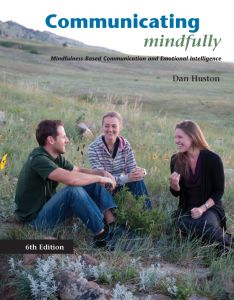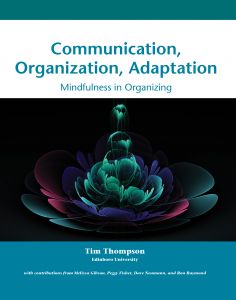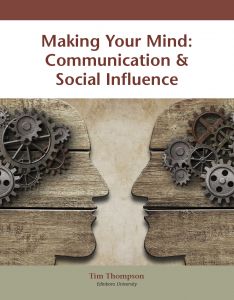Learn about Our Communications Titles
Communicating Mindfully: Mindfulness-Based Communication and Emotional Intelligence
Communicating Mindfully describes a method for improving communication skills that combines the study of communication theory with training in mindfulness. This powerful combination reveals how people often interpret the events of their lives unconsciously and communicate habitually and unproductively as a result.
Communication, Organization, Adaptation: Mindfulness in Organizing
People and organizations adapt to a changing marketplace through communication, learning, and planning together. Incorporating mindfulness into organizational communication can enhance awareness, social interaction, and change management.
Making Your Mind: Communication & Social Influence
It’s not just matters of mind but also the relations between minds, how it all interacts, that is of interest. Your mind is made by interactions with many others. Your thoughts are encoded with words, images, and information you took in from various people and groups. Mind evolves in relation to many groups, like family and friends.
Featured Author

Dan Huston, MST
Professor of Communication and Writing
NHTI—Concord’s Community College
Professor Huston teaches mindful communication and writing in the English Department at NHTI-Concord’s Community College. He has been incorporating mindfulness, meditation, and emotional intelligence in his communication curriculum for over twenty years and was awarded NHTI’s 2008 Chancellor’s Award for Teaching Excellence. Huston is the author of the textbook Communicating Mindfully: Mindfulness-Based Communication and Emotional Intelligence, which has been adopted at numerous colleges and universities, as well as other publications on mindful communication. His Communicating Mindfully course is required of students in several degree programs at NHTI and strongly recommended for others. The course has doubled as a form of professional development for faculty, and it serves as the foundation of NHTI’s Mindful Communication Certificate (https://www.nhti.edu/program/mindful-communication/).
Huston has worked extensively with a variety of departments to expand mindfulness in their courses, including information technology, dental, addiction counseling, human services, and early childhood education. This training has inspired curriculum development to infuse mindfulness in courses ranging from cross-cultural literature to internship practicums.
Huston provides training to businesses and educational institutions, and he regularly presents at professional conferences. He has received training at the Center for Mindfulness in Medicine, Health Care and Society at the University of Massachusetts Medical School.
Want to adopt one of our Communications titles for your course?
Our custom editors and product team will schedule a personal demo for you and your team of instructors to find out how we can best help you and your students.
Fill out this form to be connected to an August Learning Solutions representative.




